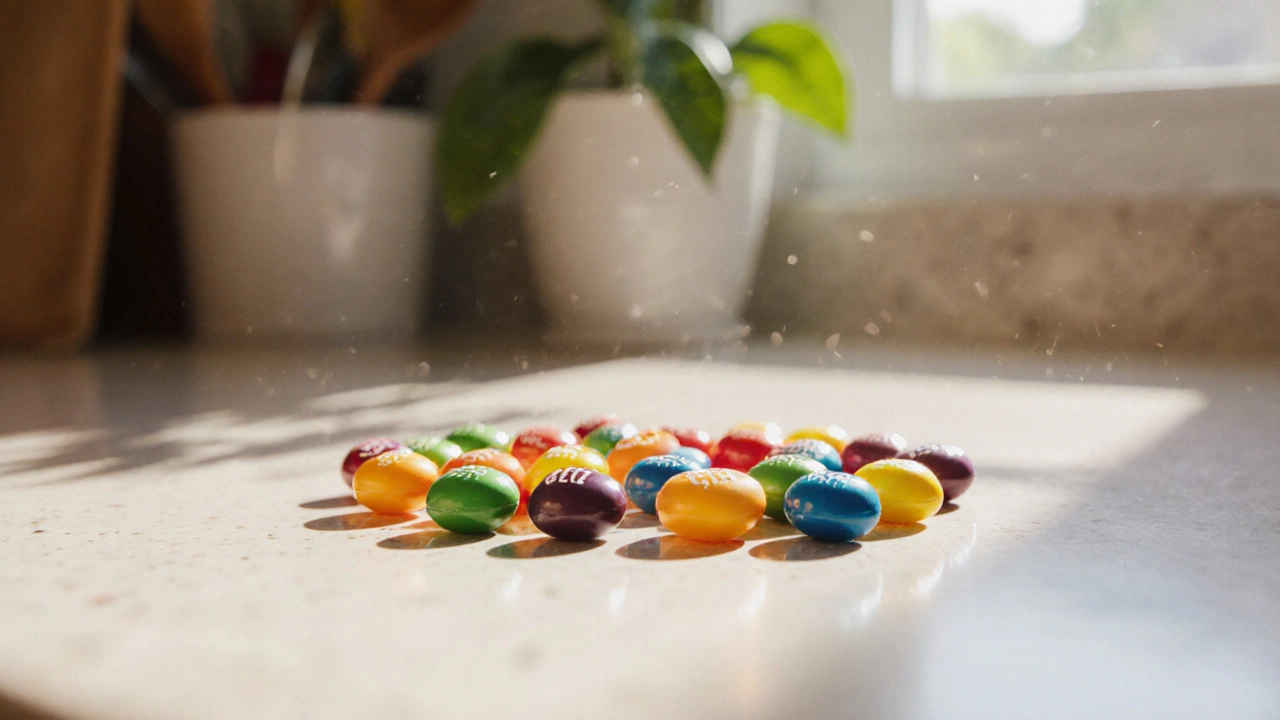Skittles Vegan? Ingredients, Labels & Alternatives Explained
Discover if Skittles are vegan by examining ingredients, label nuances, regional differences, and safe alternatives for strict vegans.
When working with Skittles ingredients, the blend of sugars, syrups, flavorings, and colorants that give each bite its signature taste and look. Also known as rainbow candy formula, it defines the whole candy experience. Understanding candy labeling, the way manufacturers list components on the package is essential for spotting allergens, vegan options, and artificial additives. The role of food coloring, FDA‑approved dyes that create the bright hues cannot be ignored, and knowing whether gelatin, an animal‑derived gelling agent, is present helps vegetarians and vegans make safe choices.
The foundation of any candy is sugar. In Skittles, granulated sugar provides the primary sweetness, while corn syrup adds chewiness and prevents crystallization. This sugar‑rich base creates the quick energy punch that kids love, but it also means the candy is high‑calorie. Skittles ingredients therefore require mindful portion control, especially for those watching blood sugar levels.
Next up is the flavor system. Skittles use a mix of natural and artificial flavorings to achieve their iconic fruit taste. The citrus notes come from citric acid and natural fruit extracts, while the unique berry flavors rely on synthesized compounds that mimic real fruit. This blend directly influences dietary preferences – for example, the vegan candy community often checks flavoring sources, a concern echoed in posts about vegan M&Ms.
The vibrant shell is built from a combination of food‑grade colorants and a thin sugary coating. Dye No. 40, No. 3, and No. 5 are common in the U.S., delivering the red, orange, and yellow shades you see. These colorants are regulated, but they raise questions for parents concerned about dye sensitivities. Reading the candy labeling section of the package helps you identify exactly which dyes are used.
Acidity regulators like citric acid and malic acid give Skittles their tangy bite. They balance the sweetness from sugar, creating a flavor profile that’s both sweet and tart. This balance is crucial for the overall mouthfeel and is a key reason why Skittles feel so refreshing compared to other hard‑candy types.
The outer shell also contains a small amount of carnauba wax, a plant‑based coating that gives each piece a glossy finish and prevents them from sticking together. This wax is vegan‑friendly, reinforcing the fact that Skittles are gelatin‑free and suitable for most vegetarians.
Allergen awareness is another important angle. Because Skittles contain no nuts, dairy, or gluten, they’re safe for many with common food sensitivities. However, cross‑contamination can occur in shared facilities, so the label’s “may contain” warnings are worth a glance, especially for those with severe allergies.
Nutritionally, a standard serving of Skittles (about 40 g) delivers roughly 150 calories, primarily from sugar. The candy provides minimal protein, fiber, or essential vitamins, so it’s best enjoyed as an occasional treat rather than a snack staple.
Finally, the production process – known as panning – layers the syrup mixture onto a seed candy core, building up the colorful shell layer by layer. This technique explains why each piece feels uniform and how the flavor can be evenly distributed throughout the candy.
Armed with this breakdown, you’ll be able to read ingredient lists confidently, spot the dyes, and decide if Skittles fit your dietary goals. Below, you’ll find a curated set of posts that dive deeper into related topics like vegan candy alternatives, sugar‑free fudge tricks, and how to dissect candy labels for hidden ingredients. Explore the collection to expand your sweet‑tooth knowledge and discover practical tips for healthier indulgence.

Discover if Skittles are vegan by examining ingredients, label nuances, regional differences, and safe alternatives for strict vegans.